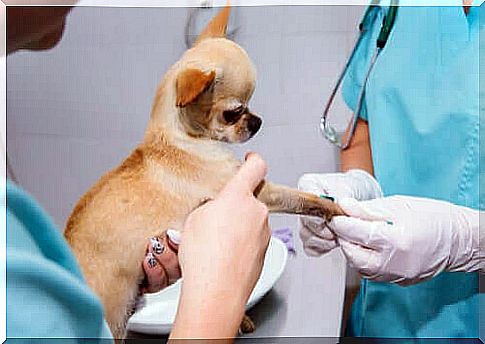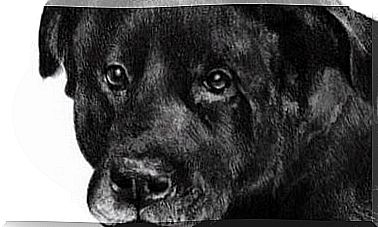Cushing’s Syndrome In Dogs: Detection And Treatment

Cushing’s syndrome or hyperadrenocorticism is a hormonal disorder produced by a continuous increase in the hormone cortisol. Like humans, dogs, cats and horses can suffer from the problem, but it is more common in dogs than in cats and horses. If your dog has been diagnosed with Cushing’s syndrome and you want to know more about this disease, in this space we will provide information about its detection and treatment.
Why does Cushing’s syndrome occur?
The adrenal glands are located above the kidneys and have a crescent shape. They are responsible for the production and secretion of several hormones, including cortisol. Its secretion is regulated by another hormone, called corticotrophin (ACTH), produced in the pituitary, which in turn is produced by the corticotrophin-releasing hormone (CRH), which is synthesized in the hypothalamus.
Cortisol adapts the body to stressful situations, preparing us for ‘fight or flight’ situations. It has many effects, including metabolism of glucose, protein and fat for energy. It also increases blood pressure and regulates water balance in the body. The problem arises when the effects of cortisol remain constant in the body.
Cushing’s syndrome appears as a result of consistently high levels of cortisol. There are several main causes for this increase in blood cortisol:
- Pituitary-dependent hyperadrenocorticism, caused by a tumor in the pituitary that causes it to secrete more ACTH and, as a consequence, more cortisol. It is the most frequent cause, representing between 80 and 90% of cases.
- Adrenocortical-dependent hyperadrenocorticism, caused by a tumor in the adrenal gland that produces too much cortisol. It is less frequent, representing around 10 to 20% of clinical cases.
- Iatrogenic hyperadrenocorticism, in dogs treated with corticosteroids for a long time. It is quite common in older dogs.
What are the symptoms of Cushing’s syndrome in dogs?
There are many symptoms associated with this disease. We can find:
- Polyuria – polydipsia: the dog is very thirsty and urinates much more often than normal.
- Polyphagia : great increase in appetite.
- Hair loss.
- Weakness.
- Distention of the abdomen.
- Generalized hyperpigmentation.
- Dermal atrophy and decreased subcutaneous tissue.
- Calcium deposits in the dermis (head, back or belly).
How is Cushing’s syndrome detected?
In addition to clinical signs, Cushing’s syndrome in dogs is diagnosed through a series of veterinary tests. Blood tests can guide the diagnosis, but it is only confirmed through a cortisol stimulation or suppression test.
In the stimulation test, blood is collected and cortisol is measured. Then ACTH is injected and, an hour later, blood is drawn again to measure cortisol. The suppression test is similar, but in this case a synthetic hormone that mimics cortisol is injected. The latter type allows us to verify whether hyperadrenocorticism is pituitary-dependent or adrenal-dependent.

Other tests that aid in diagnosis are an ultrasound of the adrenal glands to see if they are enlarged, or a measurement of the cortisol/creatinine ratio in the urine. If the proportion is high, the animal may suffer from Cushing’s syndrome.
Treatment of Cushing’s Syndrome in Dogs
The removal of the adrenal or pituitary tumor would be the cure for Cushing’s syndrome, but given the complexity and risks of surgery due to its proximity to the aorta and vena cava, when it comes to an adrenal tumor, most patients cases is treated with medication.
A medicine called trilostane is usually used orally for the rest of your life. Trilostane blocks the synthesis of adrenal steroid hormones. Between 70% and 90% of dogs respond favorably to this treatment with one or two daily doses.

There are also other medications and it is the professional who will determine which one to use for each case. It is very important to keep a close watch with the veterinarian. Early detection also influences treatment success.
You now know about Cushing’s syndrome, detection and treatment. Remember the importance of having an annual veterinarian assessment to check your pet’s health, especially if you notice any symptoms.







